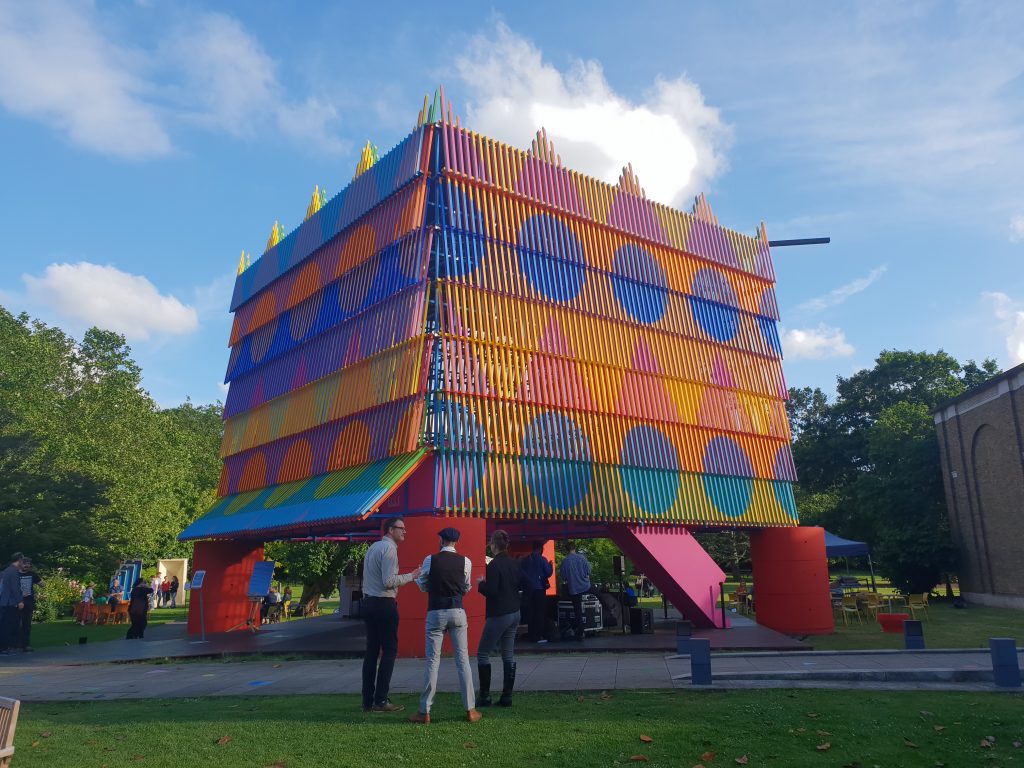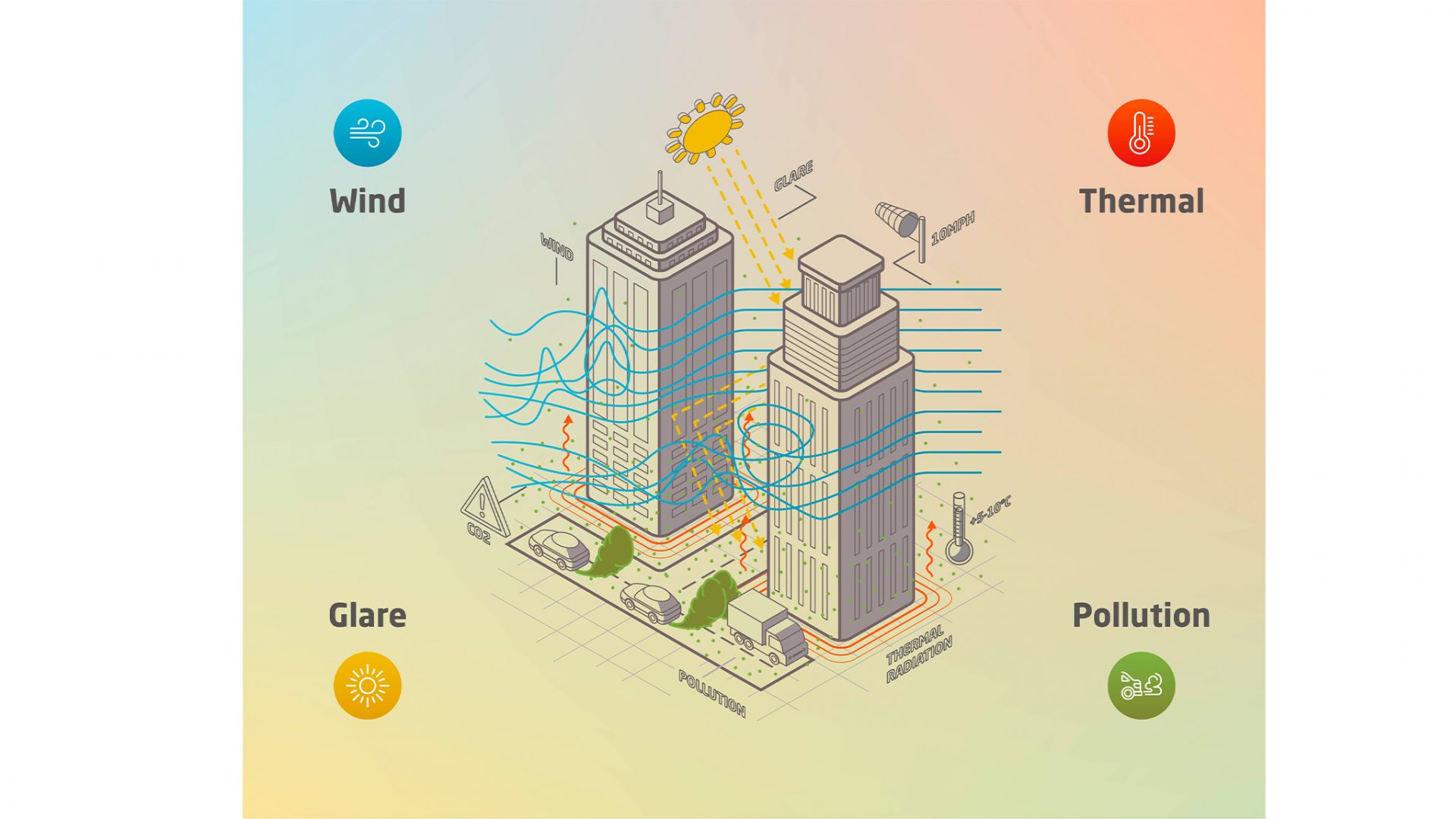- Ilaria Vignolo is Marketing and Communications Coordinator at New London Architecture. In this piece she shares her first impressions of ‘The Colour Palace’, an installation designed by Pricegore with Yinka Ilori for the London Festival of Architecture, the second edition of the Dulwich Pavilion at Dulwich Picture Gallery. The pavilion is on view until 22 September.

“This makes me want to cry… tears of joy” laughs my friend, giving a quick wipe behind her sunglasses. We are stood at the entrance to the grounds of the Dulwich Picture Gallery and have just set eyes on the Yinka Ilori and Pricegore-designed ‘The Colour Palace’, created for this year’s London Festival of Architecture – a huge cubic pavilion painted a rainbow of colours, sitting on four huge cylinder-shaped ‘stilts’ .
I had been meaning to visit the gallery for years, but a glimpse at the colossal multi-coloured pavilion on the LFA newsletter, a collaboration between British-Nigerian artist and designer Yinka Ilori and architecture practice Pricegore, followed by a fascinating LFA talk at Shoreditch-based learning network YCN, was exactly the prompt I needed to make the trek down from east London.
The talk, ‘Graphic Content’, responded to this year’s LFA theme of ‘Boundaries’ by looking at the fluid, blurring boundaries between graphic design and architecture, two disciplines which have never been more entwined than they are now. A panel of design thinkers including Russell Potterfrom creative studio SODA, Joy Nazzarri of dn&co, Martyn Evans of U+I plus superstar designer and artist Morag Myserscough took turns to share their thoughts on the ways designers shape environments through bold visions and beautiful forms.Coincidentally, Morag was also one of the judges for this year’s Dulwich Picture Gallery LFA pavilion design competition won by ‘The Colour Palace’.
Russell Potter raised the question ‘how can designers represent architecture on a 2D surface?’. He used SODA’s own Compton Courtyard Mural as an example, now an Instagram star in its own right; a layered jungle landscape printed on to the façade of their studio, which reflects the hidden garden within the courtyard. ‘The Colour Palace’ exemplifies this beautifully. The structure is inspired by the colourful prints sold in a Lagos market, where the traditional textiles hang, densely layered, from wooden frames. As Ilori points out, it is also very much ‘representative of today’s London’ as it is intended to represent a culturally diverse London and ‘attract a much wider audience to the gallery’. It responds to the LFA’s chosen theme by fusing the boundaries between European and West African traditions.
After emerging from a winding bus journey and walk through quiet, residential Dulwich, we are met with a view that feels really quite surreal. In the middle of the manicured gallery’s lawn, we are greeted by an explosion of colour and geometric patterns, bright, bold and eye-catching. People of all ages are exploring the interior of the installation or sprawled around it, engaging in creative pursuits from neon life-drawing painting, stitching a collaborative pattern or interacting with the immersive installations dotted around by students from the Bartlett School of Architecture. The sight breeds an atmosphere of optimism and exudes positivity – no small feat when faced with relentless news of the political climate and climate crisis these days.
At ‘Graphic Content’, U+I’s Martyn Evans talked ‘using design to make a temporary space beautiful quickly and totally change the perception of a place’ invoking Morag Myserscough’s magnificent, psychedelic public art installations, which embody her famous mantra ‘make happy those who are near and those who are far will come’. Applying the ‘far’ of this motto to our hour-long commute into the leafy suburbs may be a bit too literal, however I will say that ‘The Colour Palace’ filled me with joy and swelling pride, as a Londoner, to be part of this colourful city. If you like it and happen to have £25,000 to spare, for some magical reason, you may even be able to buy the pavilion after its stay at the Dulwich Picture Gallery. I just hope that, wherever it ends up, it will remain in public view and continue to affect everyone who sees it.






